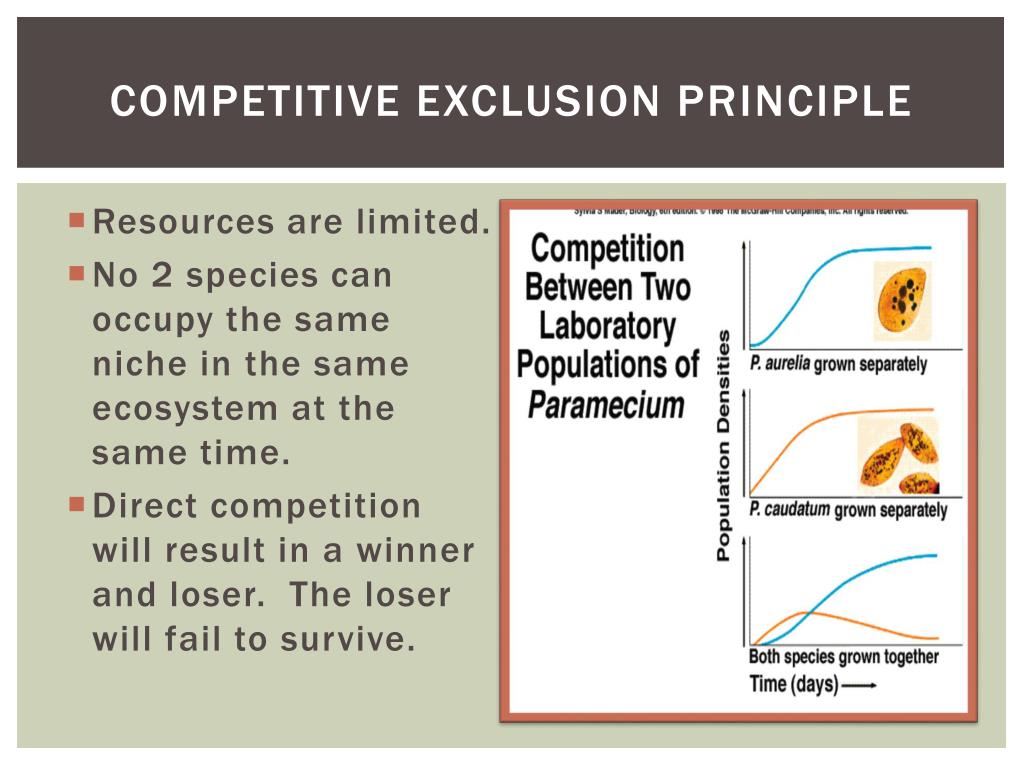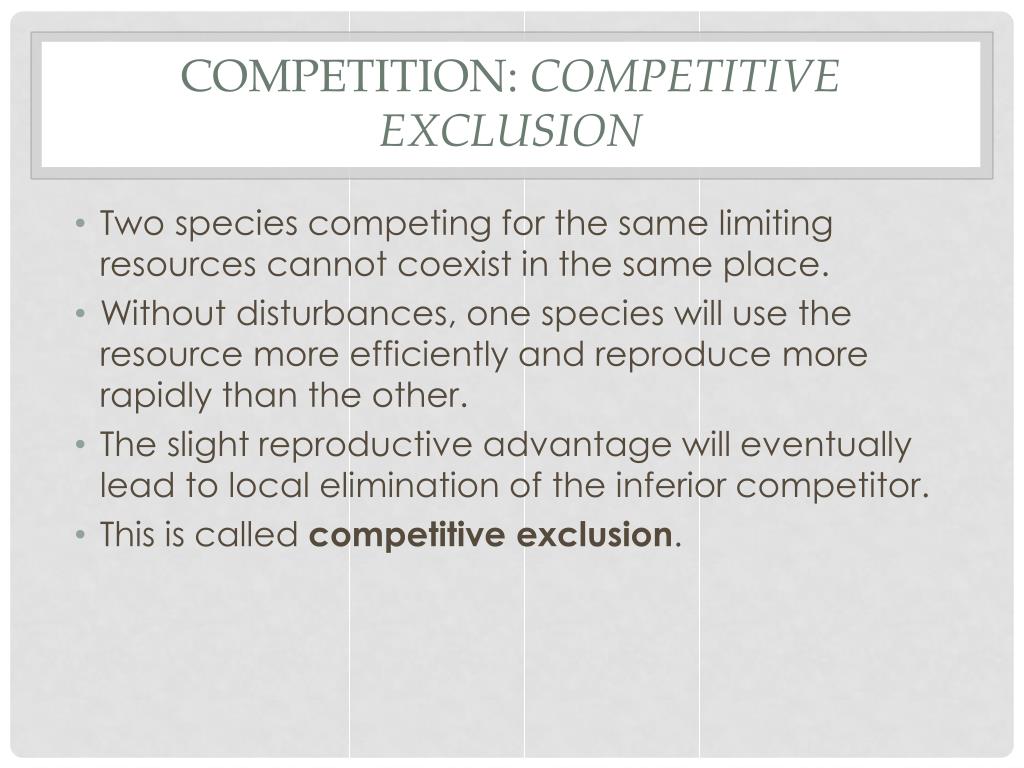


This means that each species will inhibit their own population growth before they inhibit that of the competitor, leading to coexistence.Īnother mechanism for avoiding competitive exclusion is to adopt alternative life history and dispersal strategies, which are usually reinforced through natural selection. Species can survive together if intra-specific is stronger than inter-specific competition. The four outcomes of this model are: 1) species A competitively excludes species B 2) species B competitively excludes species A 3) either species wins based on population densities or 4) coexistence occurs. This model relates the population density and carrying capacity of two species to each other and includes their overall effect on each other. The outcomes of competition between two species can be predicted using equations, and one of the most well known is the Lotka-Volterra model (Volterra 1926, Lotka 1932). Whether by interference or exploitation, over time a superior competitor can eliminate an inferior one from the area, resulting in competitive exclusion (Hardin 1960). Simply put, the use of the resource by one individual will decrease the amount available for other individuals. Exploitation competition occurs when individuals interact indirectly as they compete for common resources, like territory, prey or food. This is also an example of an intra-specific interaction. For example, when a male gorilla prohibits other males from accessing a mate by using physical aggression or displays of aggression, the dominant male is directly altering the mating behavior of other males. When an individual directly alters the resource-attaining behavior of other individuals, the interaction is considered interference competition. Interference competition occurs directly between individuals, while exploitation competition and apparent competition occur indirectly between individuals (Holomuzki et. A third form, apparent competition, is not. Two of them, interference competition and exploitation competition, are categorized as real competition. There are three major forms of competition. The outcome usually has negative effects on the weaker competitors. These are not the only types of species interactions, just the most studied - and they are all parts of a larger network of interactions that make up the complex relationships occurring in nature.Ĭompetition is most typically considered the interaction of individuals that vie for a common resource that is in limited supply, but more generally can be defined as the direct or indirect interaction of organisms that leads to a change in fitness when the organisms share the same resource. The ones that will be discussed in this article are competition, predation, herbivory and symbiosis. However, since most species occur within ecological communities, these interactions can be affected by, and indirectly influence, other species and their interactions. Intra-specific interactions are those that occur between individuals of the same species, while interactions that occur between two or more species are called inter-specific interactions. Using these classes of interactions as a framework when studying an ecological community allows scientists to describe naturally occurring processes and aids in predicting how human alterations to the natural world may affect ecosystem properties and processes.Īt the coarsest level, ecological interactions can be defined as either intra-specific or inter-specific. Nonetheless, there are several classes of interactions among organisms that are found throughout many habitats and ecosystems. As a result, ecological interactions between individual organisms and entire species are often difficult to define and measure and are frequently dependent on the scale and context of the interactions (Harrison & Cornell 2008 Ricklefs 2008 Brooker et al.

The nature of these interactions can vary depending on the evolutionary context and environmental conditions in which they occur. Species interactions form the basis for many ecosystem properties and processes such as nutrient cycling and food webs. Organisms live within an ecological community, which is defined as an assemblage of populations of at least two different species that interact directly and indirectly within a defined geographic area (Agrawal et al.


 0 kommentar(er)
0 kommentar(er)
